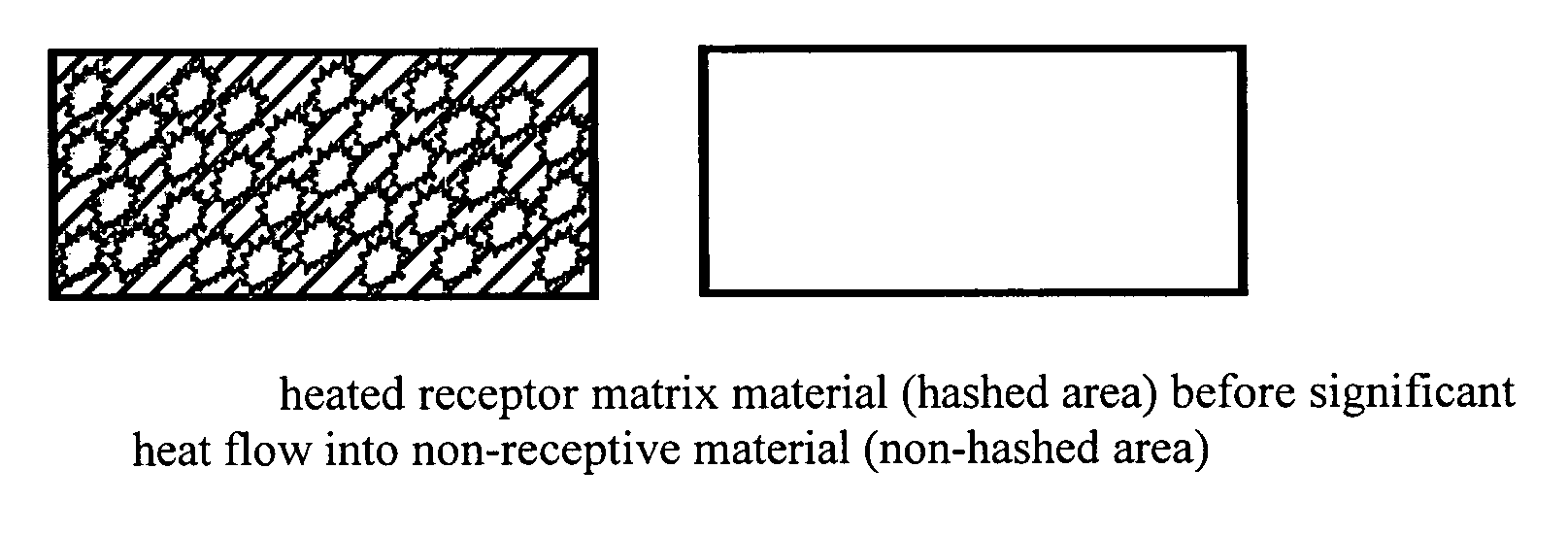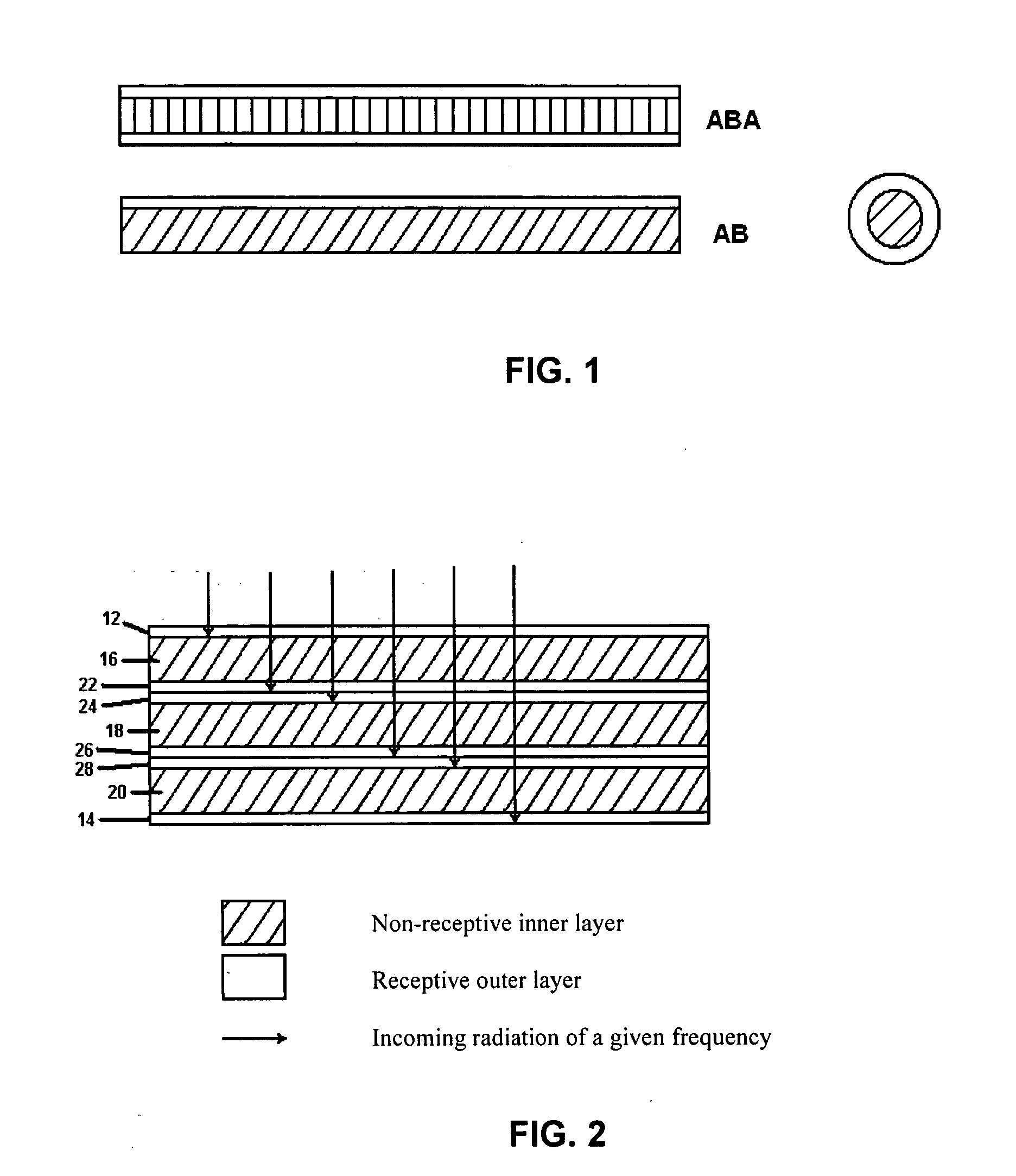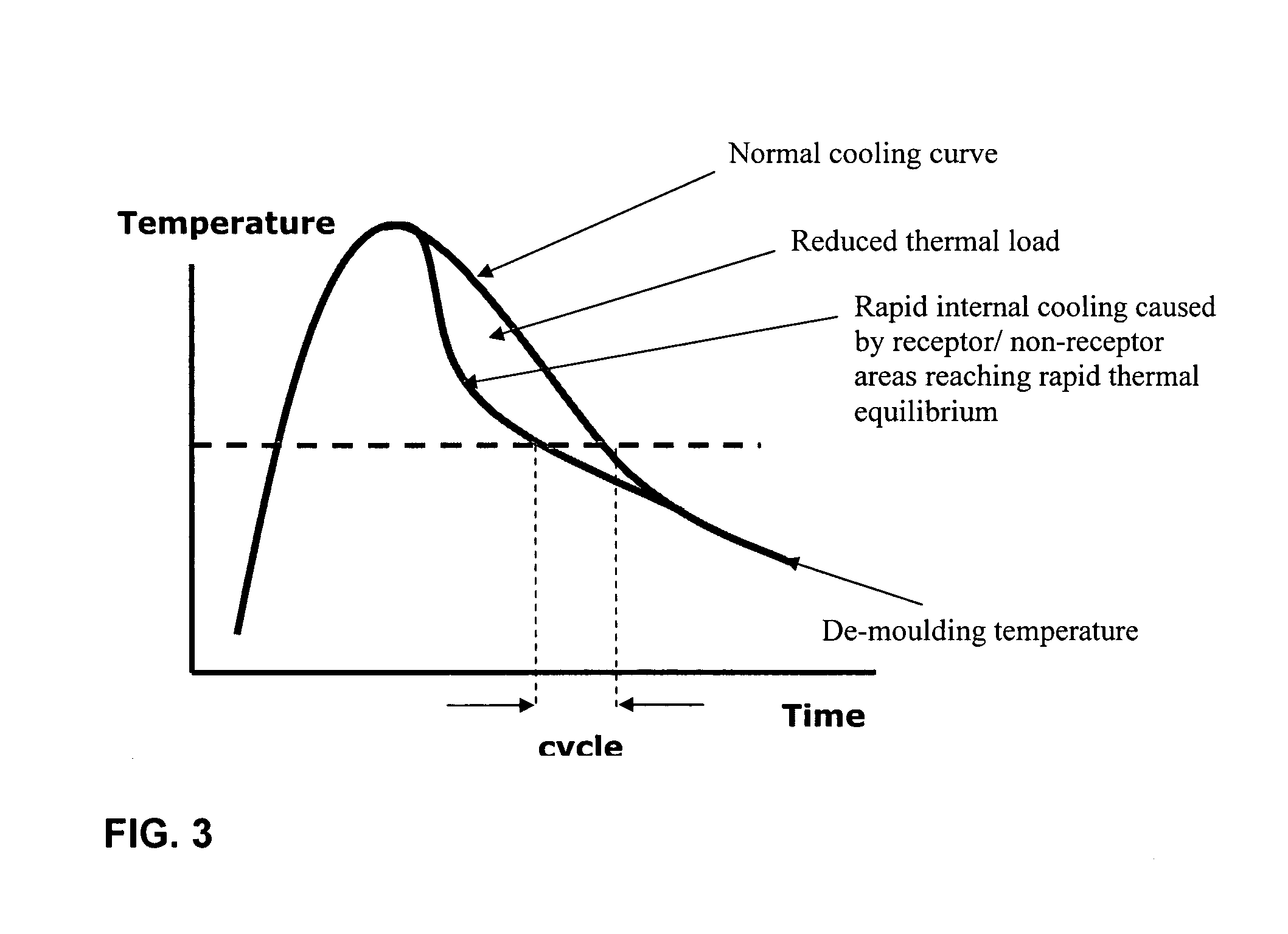Method of and apparatus for producing formable products
a technology of formable products and apparatuses, which is applied in the direction of domestic articles, lamination, etc., can solve the problems of material surface degradation, large volume to surface area ratio of heated materials, and the maximum allowable surface temperature of conventional heat-flow of workpieces, so as to reduce the residence time, improve the quality of parts, and reduce the effect of thermal degradation
- Summary
- Abstract
- Description
- Claims
- Application Information
AI Technical Summary
Benefits of technology
Problems solved by technology
Method used
Image
Examples
Embodiment Construction
[0115]The teachings herein provide a method and system for selectively heating portions of a material prior to processing. This may be achieved by including within the material components which are sensitive to heating radiation and other components which are not so sensitive or by directing heating energy to only parts of the material to be processed. Such selective heating reduces the time and energy required to bring the material into a flowable or otherwise processable condition and reduces the cooling time.
[0116]The preferred embodiments can be implemented at various scales (dimensions). The principle underlying one embodiment of processable structure is schematically illustrated in FIG. 1.
[0117]The embodiment exploits the ability of polymers and other materials to absorb, or not, at given frequencies and the potential of narrow range (distribution) wavelength microwave techniques (that is, the ability to “tune” or “de-tune” to specific frequencies, discussed in detail below).
[...
PUM
| Property | Measurement | Unit |
|---|---|---|
| wavelength | aaaaa | aaaaa |
| wavelength | aaaaa | aaaaa |
| wavelength | aaaaa | aaaaa |
Abstract
Description
Claims
Application Information
 Login to View More
Login to View More - R&D
- Intellectual Property
- Life Sciences
- Materials
- Tech Scout
- Unparalleled Data Quality
- Higher Quality Content
- 60% Fewer Hallucinations
Browse by: Latest US Patents, China's latest patents, Technical Efficacy Thesaurus, Application Domain, Technology Topic, Popular Technical Reports.
© 2025 PatSnap. All rights reserved.Legal|Privacy policy|Modern Slavery Act Transparency Statement|Sitemap|About US| Contact US: help@patsnap.com



